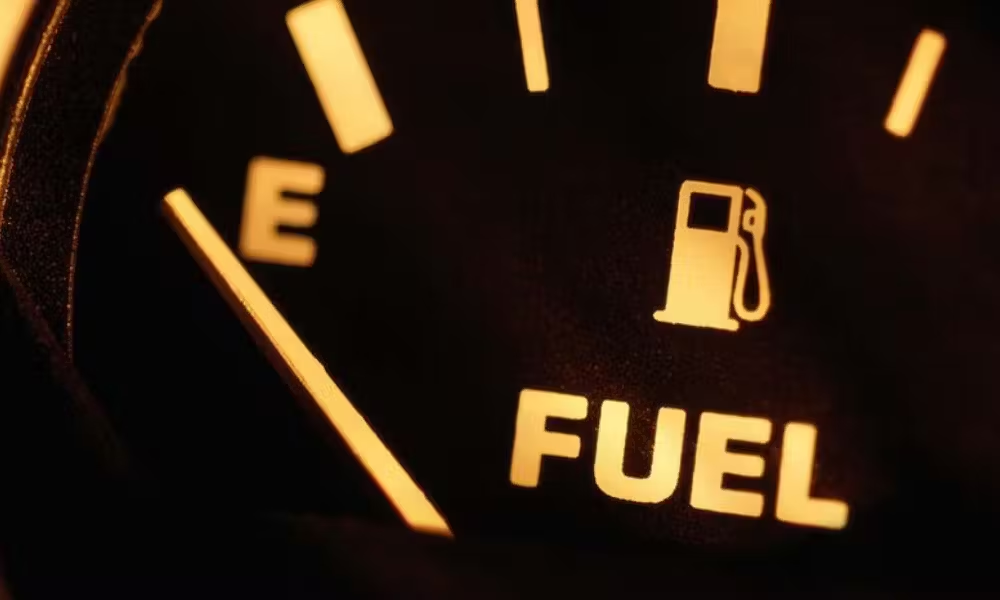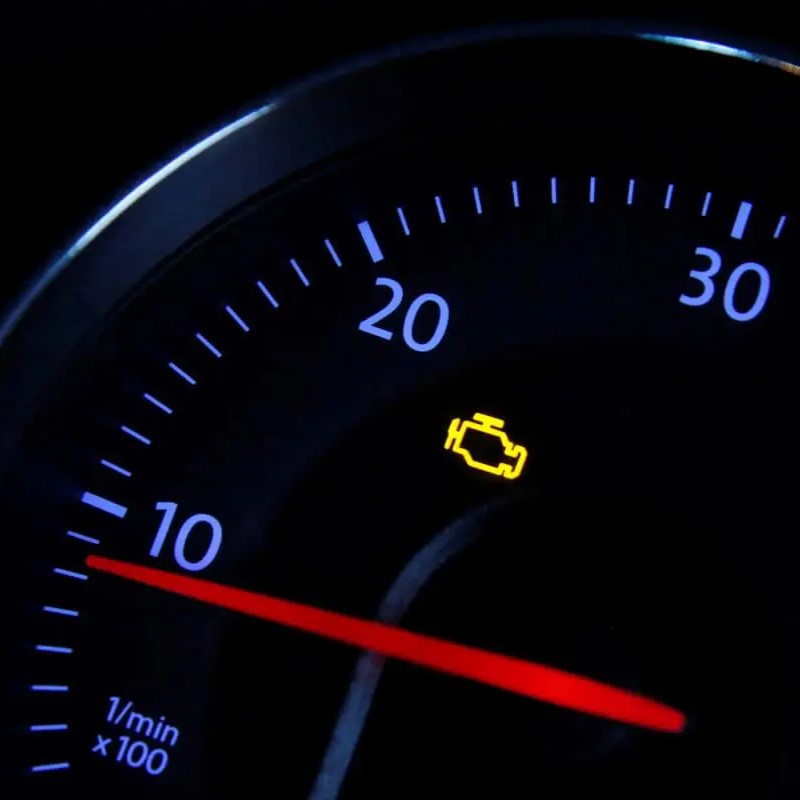The gas light on your car’s dashboard – that simple, yet potent symbol – can strike fear into the heart of even the most seasoned driver. It’s a universal warning: fuel is dwindling, and a gas station visit is imminent. But how much wiggle room do you really have after that light illuminates? Can you safely push on for a few more miles, or is a sputtering stall on the side of the road a near certainty?
Fortunately, the gas light isn’t a death knell for your journey. It’s a signal, a heads-up that you’re nearing empty. However, the exact range you have after seeing it depends on several factors. Let’s delve deeper into the world of gas lights and understand what they truly mean.
Demystifying the Light: When It Turns On
Car manufacturers don’t adhere to a universal standard for when the gas light triggers. It typically illuminates when your fuel tank dips below a certain percentage, usually around 10-15%. This translates to a varying number of miles remaining, depending on your car’s size and fuel efficiency.
For instance, a large SUV might have a larger gas tank and could offer 50 miles of driving after the light turns on, while a fuel-efficient compact car might only manage 20-30 miles. Additionally, aggressive driving habits that guzzle gas will shorten your post-light range compared to a more relaxed driving style.

Beyond the Light: Understanding Your Car’s Capacity
Consulting your car’s owner’s manual is crucial. It will specify your vehicle’s gas tank capacity and, more importantly, the estimated range you can expect after the gas light flickers on. This information is invaluable – it equips you with a much clearer picture of your remaining fuel and reduces the anxiety associated with a lit gas light.
Some newer cars take this a step further by displaying a “distance to empty” reading on the dashboard. This readout, while not always perfectly accurate due to fluctuating driving conditions, offers a real-time estimate of how many miles you can travel before hitting reserve.

The Hidden Costs of Running on Empty
While it might be tempting to push your luck and squeeze a few extra miles out of a dwindling fuel tank, there are potential downsides to consider. Here’s why consistently running on fumes might not be the best strategy for your car’s health:
- Fuel Pump Strain: Your car’s fuel pump relies on the gasoline in your tank to stay cool and lubricated. When fuel levels are low, the pump is exposed to greater heat, increasing the risk of overheating and potential failure. Replacing a faulty fuel pump can be a costly repair.
- Engine Issues: Modern engines are designed to operate with a specific amount of fuel in the tank. Running on near-empty reserves can lead to problems like engine sputtering and stalling. In extreme cases, it can even draw in contaminants from the bottom of the tank, harming your engine’s delicate components.
- Inconvenience and Safety Risks: Running out of gas in an unfamiliar area can be a major inconvenience, leaving you stranded and potentially delaying your trip. It can also be a safety hazard, especially on busy roads or highways.

Developing Smart Fueling Habits
Prevention is always better than cure. Here are some tips to avoid the stress and potential damage caused by a low fuel light:
- Plan Your Refueling: Before embarking on a long trip, factor in gas station availability along your route. Consider filling up before the halfway mark, especially if you’re unfamiliar with the area. There’s no harm in topping up early – it ensures peace of mind and avoids the scramble for gas when the light illuminates.
- Utilize Gas Station Locators: Many navigation apps and smartphone features offer real-time gas station locators. These tools can be lifesavers, especially when driving in unfamiliar territory.
- Pay Attention to the Gauge: Don’t rely solely on the gas light. Make a habit of glancing at your car’s fuel gauge regularly. This simple practice helps you stay aware of your fuel level and allows you to plan your next fill-up proactively.

Limitations of gas lamps and their inefficiencies
Gas lamps, with their warm glow and nostalgic charm, add a touch of whimsy to streets and gardens. However, beneath the picturesque facade lie limitations and inefficiencies that can’t be ignored in today’s resource-conscious world. Let’s delve into the drawbacks of these antiquated illuminators.
- Energy Waste: Unlike modern electric lights, gas lamps are notorious for inefficiency. They burn continuously, even during daylight hours when illumination is unnecessary. This constant fuel consumption translates to higher energy costs and a larger carbon footprint.
- Maintenance Demands: Gas lamps require regular maintenance to ensure proper function and safety. Leaking gas poses a fire hazard, and clogged mantles (the mesh that produces light) can lead to flickering or diminished illumination. These upkeep needs translate into additional labor costs.
- Limited Control: Dimming or adjusting the intensity of gas lamps is often cumbersome or impossible. This inflexibility makes them unsuitable for areas where light levels need to be adaptable.
- Environmental Impact: The combustion of natural gas in gas lamps releases pollutants like carbon monoxide and nitrogen oxides into the air. While generally lower than emissions from vehicles, these contribute to air quality concerns, especially in densely populated areas.
- Safety Concerns: Open flames inherent to gas lamps pose a potential fire hazard, particularly near flammable materials. Additionally, accidental contact with the hot mantle can cause burns.
- Modern Alternatives: Modern LED lamps offer a compelling alternative. They are incredibly energy-efficient, have lifespans that dwarf gas lamps, and offer superior light control and dimming capabilities. Additionally, LEDs are much more environmentally friendly, emitting minimal heat and no harmful pollutants.
- Preserving the Charm: Despite their limitations, gas lamps hold undeniable aesthetic appeal. Fortunately, advancements have led to the development of gas lamp replicas that utilize electric power sources. These replicas offer the desired aesthetic without the inefficiencies and safety concerns of traditional gas lamps.
In conclusion, gas lamps, while undeniably charming, struggle to compete with modern lighting solutions in terms of efficiency, cost, and environmental impact. As we strive for a more sustainable future, it’s important to weigh the allure of gas lamps against their limitations. Thankfully, technological advancements offer us ways to preserve the nostalgic charm of gas lamps without compromising on practicality or environmental responsibility.

Influence of gas light cars on headlights of contemporary automobiles
There actually isn’t a direct influence of gas-powered cars (often referred to as “gas light” cars) on the headlights of contemporary automobiles. Here’s why:
- Terminology: “Gas light” specifically refers to the interior light that illuminates when fuel is low, not the headlights themselves. Headlights have been a core component of cars since their inception, regardless of fuel source.
- Technological Advancements: Headlight technology has evolved significantly over time, driven by advancements in lighting materials and electrical systems. Gas-powered cars wouldn’t have a direct impact on this progress.
However, there are interesting parallels to consider:
- Safety Focus: Similar to how the gas light warns drivers of dwindling fuel, headlights are crucial for safety by illuminating the road at night and in low-visibility conditions.
- Regulation: Both headlights and gas light systems are subject to regulations to ensure proper functionality and driver safety.
Overall, while the terms “gas light” and “headlights” are related to car operation, they don’t directly influence each other’s development.
The Final Word: Respect the Light, But Don’t Fear It
The gas light on your car’s dashboard is a valuable warning system, not a harbinger of doom. By understanding what it signifies and adopting smart fueling habits, you can transform it from a source of anxiety into a helpful tool that keeps you informed and your car running smoothly. Remember, a little planning and proactive gas station stops can go a long way in ensuring a stress-free and enjoyable driving experience.





